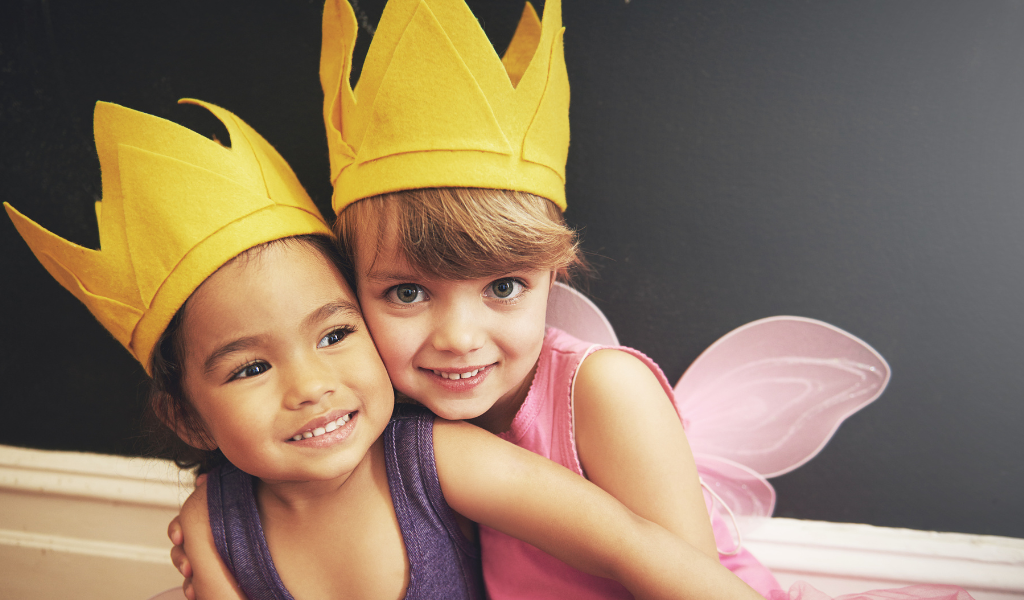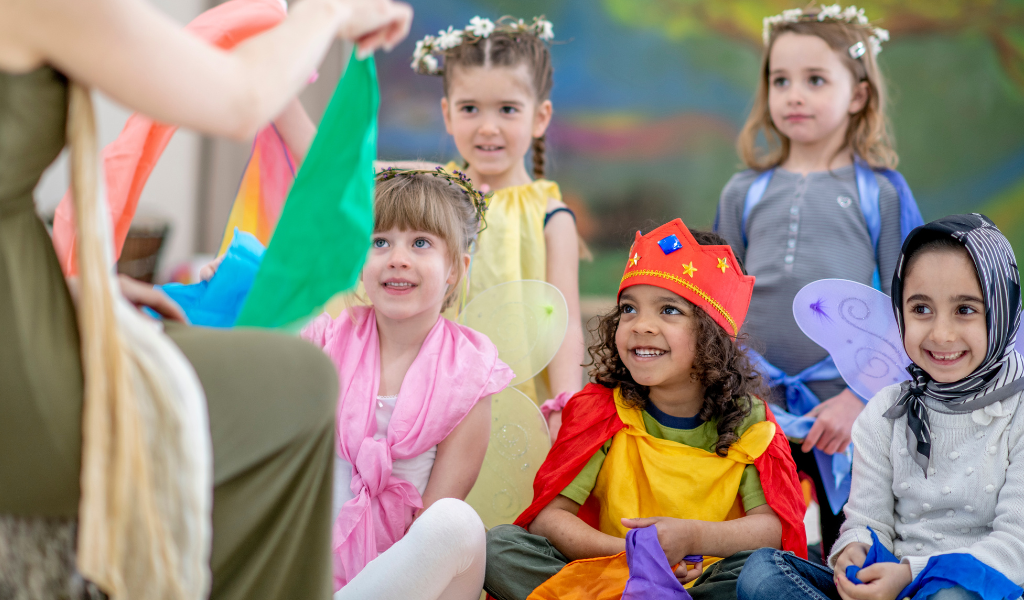In this blog, Tamsin Grimmer explores the sparkle of Christmas and the importance of nurturing the imagination in early childhood.
I love working with or being with young children at Christmas! There tends to be a lot of excitement in the air and we have permission to be as sparkly as possible!
A colleague recently shared a heartwarming moment when his little girl was overwhelmed with joy when they put up their Christmas tree that she spent a good 10 minutes jumping up and down, shouting “Yaaaaaay! Yaaaaaay! Yaaaaaay!” It served as a poignant reminder of the enchantment this season holds for young children.
Occasionally, I’m asked about my perspective on Father Christmas, or as many know him, Santa. Should adults reinforce this idea, and should children be encouraged to believe in magic?

Absolutely, I believe they should! Father Christmas plays a significant role in introducing young children to the magic of Christmas. It is developmentally appropriate for him to be real to the children in our care. Not only is his existence socially supported commercially, but also within the majority of families—studies show that a high percentage of UK families celebrate Father Christmas and 93% celebrate the holiday season. This jovial figure personifies the magical essence of the season and allows us, as practitioners, to impart the essential values that Christmas brings, such as love, joy, peace, kindness, and generosity. It becomes a wonderful opportunity to teach children the joy of giving, as well as receiving.

In the early years, the lines between fantasy and reality, fact and fiction, can be blurred. However, this doesn’t mean they cannot distinguish between pretend and real. To assume otherwise would underestimate their abilities. Children are adept at using their imaginations, effortlessly navigating between fantasy worlds and the real world, much more readily than adults.

Through magical play and fantasy, children live in a world of dragons, fairies, unicorns, and superheroes. They learn the rules of play, experiment with sometimes scary storylines in a safe context, and engage in power struggles, developing self-regulation and problem-solving skills that prepare them for the real world. Believing in magic becomes a child’s way of trying to explain the inexplicable; it allows them to believe in the impossible, fostering a growth mindset akin to Carol Dweck’s philosophy that with the right opportunities and hard work, they can be who they want to be and achieve anything.

Occasionally, adults unintentionally stifle this can-do attitude in children by imposing conditions, or reality, or explaining the ‘truth.’ I believe that this echoes Loris Malaguzzi’s sentiment in his poem “The Hundred Languages of Children” when he said, ‘They steal ninety-nine.’
Early years practitioners play a vital role in developing children’s sense of awe and wonder by creating stimulating learning environments that tap into their creativity, natural curiosity, and their belief in magic. For example, when the children arrived in nursery one morning, they found that a huge set of footprints had magically appeared overnight! They were so excited as they talked about who could have made the footprints and they followed them to a den where they found a ‘bear’, fast asleep. This simple provocation led to a wealth of fun, laughter, joy, and learning. The children ended up drawing maps of their surroundings and experimenting with making their own footprints using mud and gloop. It was truly magical.
As one of Early Childhood’s pioneers, Susan Isaacs (1931, p.7), reminds us it’s all about balance. “Let the child play and sing and dance to his heart’s content. Let him make-believe and act and draw and dig. Let him read of fairies and ogres and princes and sleeping beauties. But let us not deny his active interest in the real when he shows it.”
So let’s deck the halls, embrace the magic and share the love this Christmas!

Tamsin is an experienced early years consultant, trainer, author and principal lecturer at Norland College. Passionate about bringing love into pedagogy and early years, Tamsin is an advocate for listening to young children, making learning multi-sensory, active and, of course, playful. She tries to put this into practice with her own daughters!